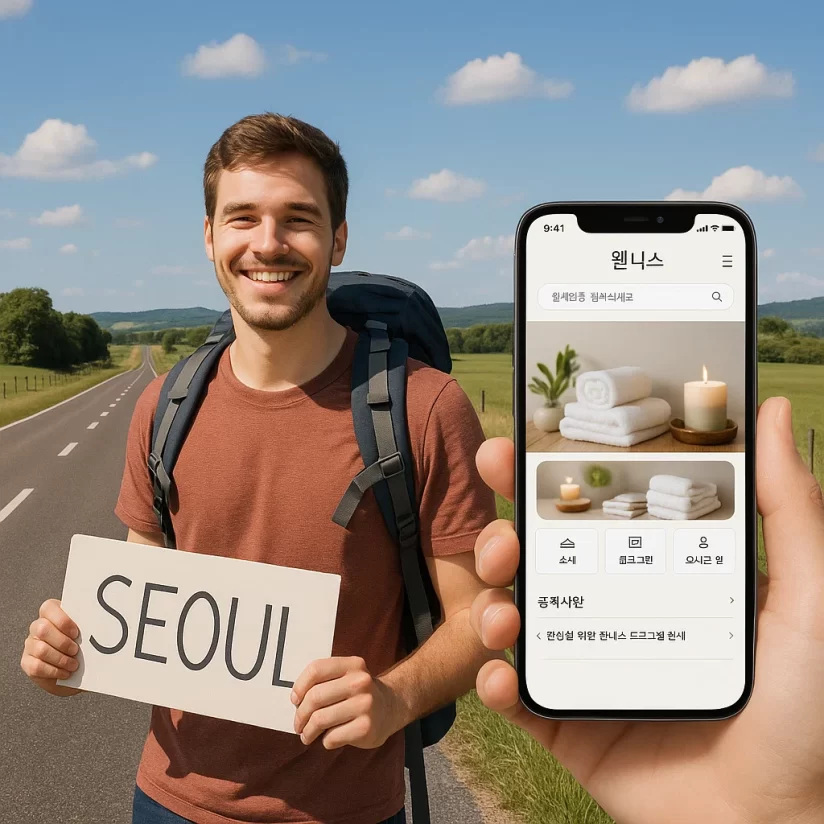Hidden Rest Stops: A Hitchhiker’s Guide to Relaxation in Korea’s Backstreets
 Solo travelers wandering through South Korea’s vibrant cities like Busan and Daegu often seek unique experiences off the beaten path. Beyond the neon-lit streets and bustling markets, a lesser-known aspect of Korean urban culture awaits: massage parlors tucked away in backstreets. These spots offer more than just relaxation; they provide a glimpse into local life. For backpackers craving a break from temple tours or K-pop cafes, understanding the cultural norms around these hidden rest stops can transform a trip into something unforgettable.
Solo travelers wandering through South Korea’s vibrant cities like Busan and Daegu often seek unique experiences off the beaten path. Beyond the neon-lit streets and bustling markets, a lesser-known aspect of Korean urban culture awaits: massage parlors tucked away in backstreets. These spots offer more than just relaxation; they provide a glimpse into local life. For backpackers craving a break from temple tours or K-pop cafes, understanding the cultural norms around these hidden rest stops can transform a trip into something unforgettable.
Navigating these spaces can feel daunting without guidance. That’s where resources like OPCMD, an Opi online platform, come in handy. This platform lists city-specific massage parlors and wellness spots, offering travelers a reliable way to find reputable locations in places like Busan’s Seomyeon or Daegu’s Dongseongno. By exploring these listings, you can discover parlors that suit your needs, whether it’s a quick foot massage or a full-body treatment after a long day of hiking.
A Cultural Perspective on Massage Parlors
Massage parlors in South Korea aren’t just about physical relief; they’re woven into the fabric of daily life. Locals often visit these spots to unwind after work, making them as common as coffee shops in some neighborhoods. In Busan, for instance, you’ll find parlors near Haeundae Beach where fishermen and office workers alike relax. Meanwhile, Daegu’s parlors often cater to students and professionals seeking a quiet escape. Understanding this cultural context helps travelers approach these spaces respectfully.
Unlike Western spas, Korean massage parlors vary widely in style and service. Some offer traditional techniques like acupressure, while others blend modern therapies. The atmosphere can range from no-frills, family-run spots to sleek establishments with private rooms. Prices are often reasonable, making them accessible for budget travelers. However, it’s wise to research beforehand to avoid tourist traps or questionable venues.
Why Busan and Daegu?
Busan, with its coastal charm, draws travelers for its beaches and seafood, but its backstreets hide wellness gems. Areas like Seomyeon pulse with energy, offering parlors that cater to both locals and visitors. Imagine sinking into a massage chair after exploring Jagalchi Market, letting the day’s adventures melt away.
Daegu, on the other hand, feels more intimate. Its downtown area, filled with quirky cafes and shops, also hosts cozy parlors perfect for a mid-journey recharge. Both cities balance urban buzz with moments of calm, making them ideal for this kind of exploration.
But why choose these cities over Seoul?
For one, they’re less overwhelming. Seoul’s fast pace can feel intense, while Busan and Daegu offer a slower rhythm, perfect for solo travelers. Plus, the massage parlors here often feel more authentic, less geared toward international tourists. You’re more likely to share a waiting room with a local than a tour group, adding to the cultural immersion.
If you are into cultural immersions in Asia, include backpacking in Vietnam on your bucket list. Just like Budan and Daegu in South Korea, Vietnam has a lot to offer.
Tips for Visiting Massage Parlors
First, always check the reputation of a parlor. Platforms like OPCMD provide reviews and details, helping you avoid sketchy spots. Next, learn basic etiquette. Remove shoes before entering, keep noise to a minimum, and clarify services upfront to avoid surprises. Language barriers can be tricky, so a translation app or a few Korean phrases like “annyeonghaseyo” (hello) and “gamsahamnida” (thank you) go a long way.
Another tip? Don’t rush.
A good massage deserves time, so plan for at least an hour. Some parlors offer add-ons like herbal teas or sauna access, enhancing the experience. If you’re unsure about tipping, it’s not customary in Korea, but a small gesture for exceptional service is appreciated. Finally, trust your instincts. If a place feels off, politely leave and find another.
Embracing the Journey
Exploring Korea’s massage parlors isn’t just about relaxation; it’s about connection. These backstreet havens let you experience a side of Korea that guidebooks often miss. Whether it’s chatting with a masseuse in broken Korean or sipping tea in a quiet lounge, these moments add depth to your travels. For backpackers, they’re a chance to slow down, reflect, and recharge before the next adventure.
So, next time you’re wandering Busan’s lively streets or Daegu’s charming alleys, consider stepping into a massage parlor. With a bit of research and an open mind, you’ll find more than just a rest stop—you’ll uncover a slice of Korea’s heart. Pack light, stay curious, and let these hidden gems surprise you.